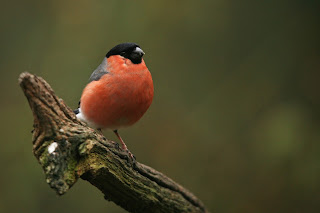It’s always difficult to
rate wildlife experiences against each other, but starling murmurations have to
be one of my favorite. In early February I witnessed my largest ever with 750,000
starlings coming to roost in the reedbeds of Shapwick Heath National Nature
Reserve on the Somerset Levels. The wetlands here have all been created from old peat workings that are now carefully managed to support many rare reedbed and wetland species.
Over the years I have
seen many starling roosts around the country at locations such as RSPB Otmoor
in Oxfordshire, Brighton Pier and Slapton Ley in Devon. However the Somerset
roost is probably the largest in the country and on occasions has thought to
contain up to million birds!
Our quest to see this
spectacle began with a day trip to Ham Wall RSPB Reserve.
It was a bright but
bitterly cold day and there were good numbers of the usual wildfowl on the areas
of open water such as tufted duck, pochard, teal, wigeon gadwall and mallard.
From the first viewing screen we picked up lots of skulking snipe before a
bittern made by a flypast giving a nice prolonged view.
(Pochard at Ham Wall)
(reeds at Ham Wall)
(Great white egret at Ham Wall)
Moving on we found one
of the resident great white egrets hunting on the edge of the marsh and later
saw it next to a little egret for size comparison. Later on we saw numerous
marsh harriers quartering low over the reedbeds and also encountered a small
flock of lesser redpoll feeding in alders. After a break for a pub lunch we visited
the Shapwick Heath National Nature Reserve side of the wetlands, just across the
road from Ham Wall.
(Lesser redpoll Ham Wall)
Earlier
in the day we had called the Starling Hotline (07866 554142) which gave details of the last location that the roost
took place so we made our way along to the extensive reedbeds on the reserve. As
we waited for the starlings to appear, numerous harsh harriers drifted in to
view across the reeds and a sparrowhawk gave a close flypast. The numbers of
other starling watchers grew as dusk approached. We were beginning to get
nervous that we were in the wrong location as there was no sign for ages, but
eventually a few starling flocks did start to appear in the golden light of the
evening.
(Starlings at Shapwhick Heath)
Soon
after some truly enormous flocks started to appear in the sky above us and they
came in from all different directions and soon merged to form a giant super
flock. This super flock must have contained several hundred thousand birds and filled
most of the visible sky. It was hard to really scale the numbers by now, but at
points the flock was so dense with birds it blacked out the sky. Everyone
watching was speechless and the only noise to be heard was the swooshing of thousands
of wings. The flocks kept coming and the mass kept growing. They then began to
murmur and created extraordinary shapes that moved like liquid. It was
breath-taking to witness.
(Starling murmartion at Shapwick Heath)
The flock then descended
just as the light really started to fade. As we made our way back to the car,
we could hear the chattering of the roost in the nearby reeds.


















